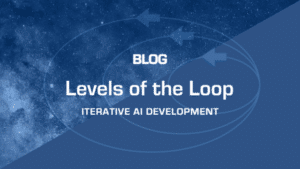Remember the future we dreamed of as kids? The one where intelligent machines helped humanity ascend—curing diseases, eliminating traffic, ending war, maybe even folding laundry properly? Yeah, that one.
Instead, we’re waking up to headlines like: “Mastercard And Visa Unleash AI Agents To Shop For You.”
Don’t get us wrong—agentic AI is exciting (we’ve built part of the Jaxon Guardrails platform around it). But it’s only half the story. The other half? Policy-aware guardrails that keep those agents aligned, auditable, and under control—especially when the stakes are high. So before we raise a glass to the AI future, let’s rim it with a little salt.
When the Hype Gets Ahead of the Tech
This week Mastercard and Visa both announced they’re rolling out different versions of AI-powered shopping agents. It’s flashy. It’s ambitious. And it’s, well… concerning.
We’ve seen this movie before: big companies racing to be at the bleeding edge of the future before the ink on their AI risk policy even dries. And while “autonomous AI agents managing your finances” makes for a killer press release, it also makes for a real headache when the systems go off-script.
Because here’s the rub—AI agents making autonomous decisions with your money (or your identity) is a high-wire act with no safety net unless you build one.
Also, maybe—and this is just a thought—we don’t need AI to take over the fun parts.
Mastercard paints a future where a “soon-to-be-30-year-old” chats with an AI to curate outfits for her milestone birthday—factoring in her style, the venue’s vibe, and even the weather. Which, sure, sounds efficient. But honestly? That sounds… kind of bleak.
When I was planning my 30th—a karaoke-cake-eating-cruise extravaganza in the Caribbean—the joy wasn’t in streamlining decisions, it was in sharing them. I texted my friends way too many dinner dress options while we debated which ones said “cozy grandma” vs. “I can still hang.” If I’d just handed all that off to an AI, I wouldn’t have been planning a party—I’d have been submitting a ticket.
We’re all for automation—but not at the cost of connection. Let AI do the grunt work, not the good stuff. Give us AI that handles the real grind—decomposing financial models, flagging fraud in real time, auditing for SEC and KYC compliance. Not the connective, chaotic, joyful stuff. Not the moments that make us human.
And sure, Mastercard says it’s secure. They’ve got tokens, audits, and verification—which is great for the transaction layer. But what about the decision layer? What about the moment when your AI agent decides to buy something wildly out of scope—like an evening gown because your algorithm knows you binge Bridgerton, even though what you actually need is a beachy cocktail dress? Guardrails don’t live in the payment system. They live inside the AI’s logic—and that’s exactly where Jaxon works.
Enter Jaxon Guardrails: The AI Future’s Missing Layer
At Jaxon, we believe AI should take the work out of work—not steal the fun out of life.
The Jaxon team saw this wave of agentic AI coming long before the press releases. The Jaxon Guardrails platform is grounded in research originally developed for the U.S. Department of Defense, designed to keep autonomous systems aligned, auditable, and under control when it actually matters.
Jaxon Guardrails gives AI systems:
- Automated policy enforcement to meet internal and regulatory standards
- Controlled decision paths that prevent risky or off-limits actions
- Formal output validation for audit-ready, explainable results
- Optional human review so you can track and trust agent behavior in real time
Because autonomous agents aren’t the end goal. Trustworthy ones are.
For the Technical Crowd: Why You Need Guardrails Now
Jaxon Guardrails integrate directly into the orchestration layer, translating natural-language policies into formal, symbolic logic that constrains what an agent can do—and how it does it.
We apply:
- Declarative guardrail schemas to encode business rules, domain knowledge, and risk thresholds
- Formal methods to validate decisions before execution—ensuring consistency, compliance, and auditability
- Symbolic reasoning to verify agent outputs and prevent actions that violate internal or external constraints
This isn’t just about safety nets. It’s about engineering AI agents that reason within constraints—so you can trust their autonomy without fearing its side effects.
The Bottom Line
We love innovation. But let’s stop treating every AI headline like gospel. Autonomy without guardrails isn’t empowerment—it’s showing up to a beach party in a Bridgerton ballgown.
So while Mastercard and Visa are bringing agentic AI to the masses, Jaxon is making sure autonomy comes with accountability.
The future is still beautiful. But now, it’s got guardrails.
Need help building guardrails for your AI project? Contact us!
– Danitra Campbell, Growth Advocate


